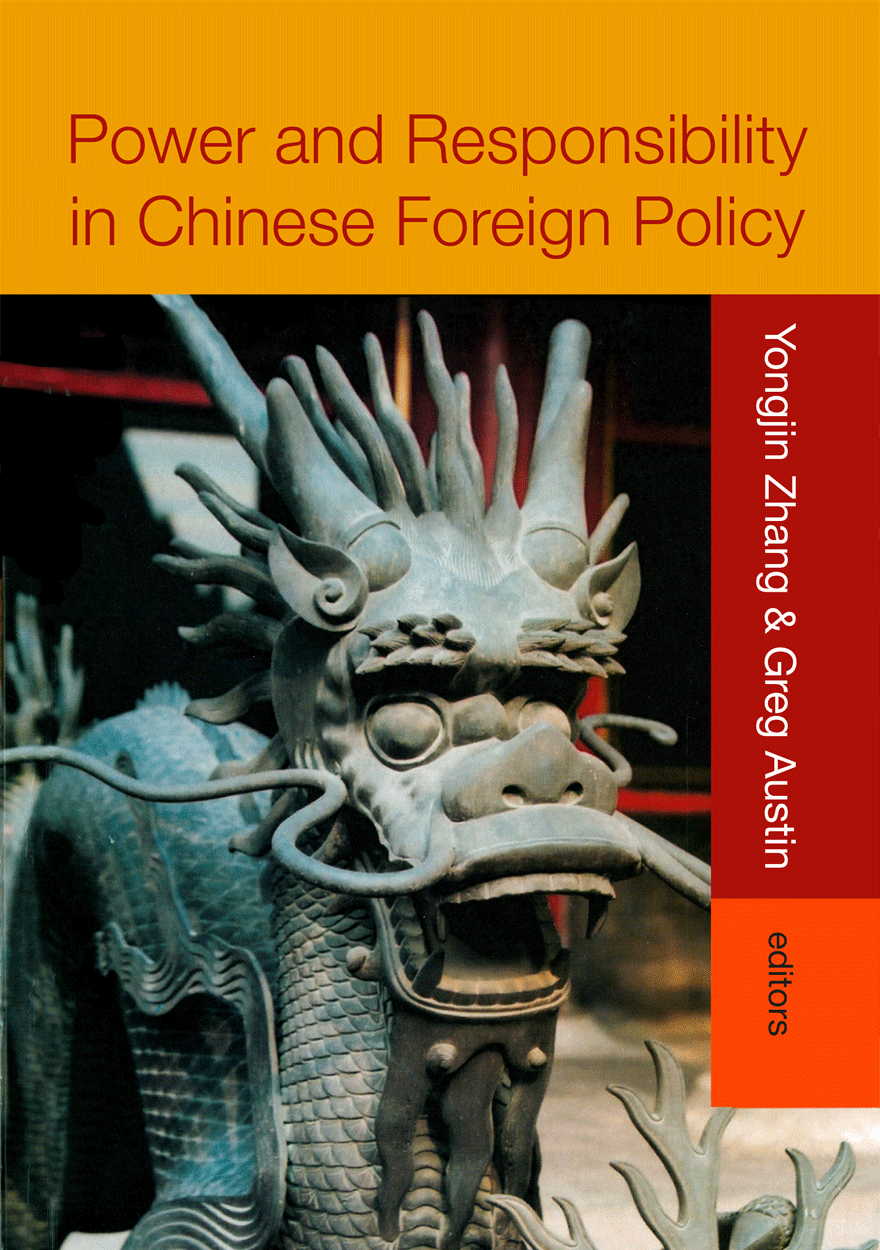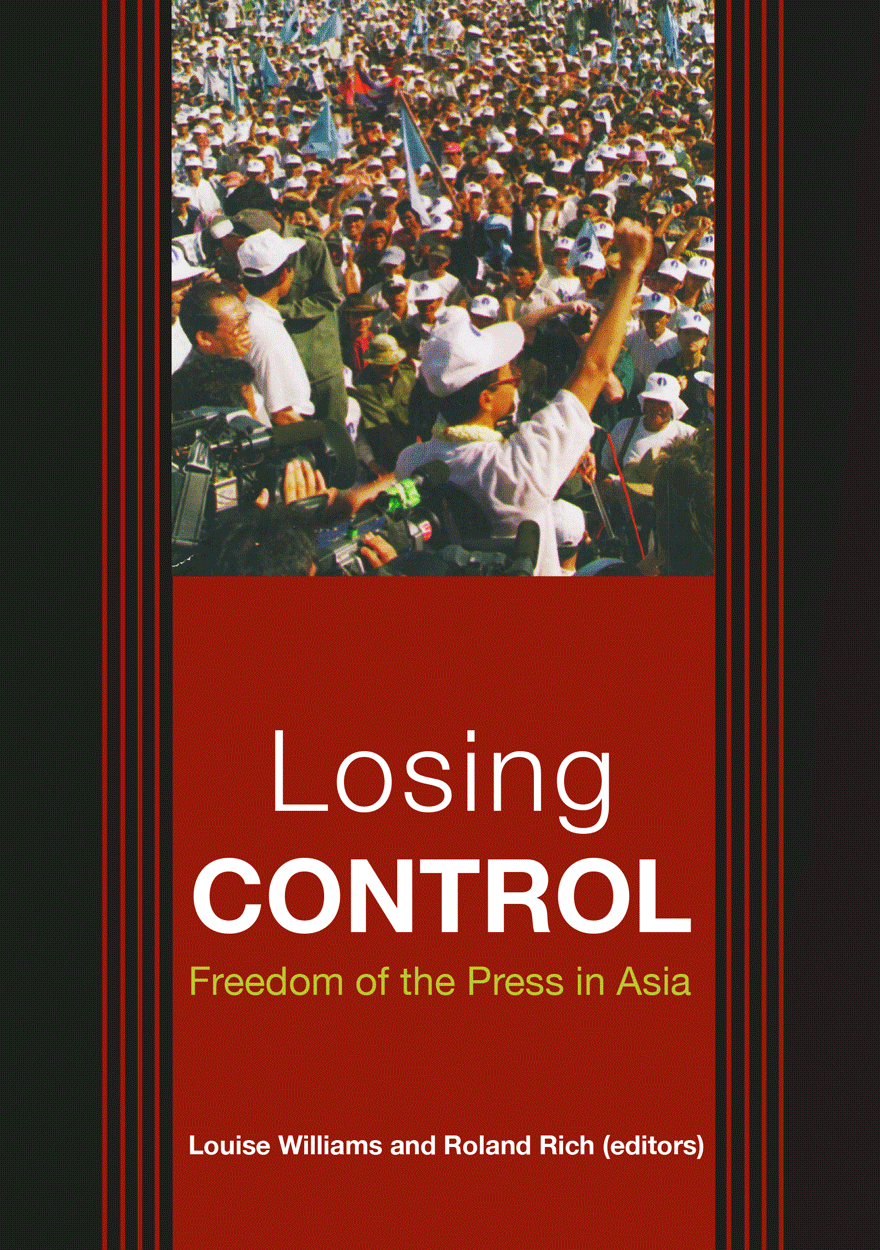Search titles
Displaying results 131 to 140 of 183.

Power and Responsibility in Chinese Foreign Policy »
Edited by: Yongjin Zhang, Greg Austin
Publication date: January 2014
The People’s Republic of China is now over fifty years old. Long considered an outsider, or a club of one, in international relations, China has recently become more active in international institutions. Is China becoming a responsible power in global and regional international relations? How accurate is the traditional perception of China? What factors may be motivating the changes in China’s approach to international institutions and its perceptions of its own role in the world? There is no certainty that China is becoming a more responsible power, recent developments may be just another manifestation of realpolitik.
Power and Responsibility in Chinese Foreign Policy provides a vital insight into these issues, analysing the critical issues in China’s international relations– China’s regional and global diplomatic and security problems, the changing role of the People’s Liberation Army, human rights, religious and democratic movements, and the concept of responsibility. Power and Responsibility in Chinese Foreign Policy is an insightful and vital introduction to all sides of the current debate over China’s international relations.

Losing Control »
Freedom of the Press in Asia
Edited by: Louise Williams, Roland Rich
Publication date: January 2014
‘A free press is not a luxury. A free press is at the absolute core of equitable development’ according to World Bank President James Wolfensohn. A free press is also the key to transparency and good governance and is an indispensable feature of a democracy. So how does Asia rate? In Losing Control, leading journalists analyse the state of play in all the countries of North Asia and Southeast Asia. From the herd journalism of Japan to the Stalinist system of North Korea, Losing Control provides an inside look at journalism and freedom of the press in each country. One conclusion—a combination of new technology and greater democracy is breaking the shackles that once constrained the press in Asia.
‘Brings together Asia’s best and brightest observers of the press.’
Hamish McDonald, Foreign Editor, The Sydney Morning Herald
‘A rare insiders’ view exposing the real dynamics behind social and political change in Asia.’
Evan Williams, Foreign Correspondent, ABC TV
‘A timely and necessary contribution to the debate over the quality of freedom in Asia.’
Geoffrey Barker, The Australian Financial Review

Rebalancing and Sustaining Growth in China (Chinese version) »
中国经济再平衡与可持续增长
Authored by: Huw Mckay, 宋立刚 主编
Publication date: November 2013
中国经济需要重新平衡的想法,不再是国家内部或外部的争议。无论是收入不平等日益认识到在家里仍然很大外部盈余;对消费和产业升级的政策话语的焦点;住房负担能力的大幅度下滑的经济,政治和社会紧张局势之间的深刻冲突工业化,城镇化和生物圈顶部的国有企业和民营企业的盈利能力之间的鸿沟;或单向压力推动实际汇率的证据,赞成的高度不平衡的结构是无所不在的。
Chinese print version of this book is available from Social Science and Academic Press

East Asia Forum Quarterly: Volume 5, Number 3, 2013 »
Publication date: September 2013
East Asia Forum Quarterly grew out of East Asia Forum (EAF) online, which has developed a reputation for providing a platform for the best in Asian analysis, research and policy comment on the Asia Pacific region in world affairs. EAFQ aims to provide a further window onto research in the leading research institutes in Asia and to provide expert comment on current developments within the region. The East Asia Forum Quarterly, like East Asia Forum online, is an initiative of the East Asia Forum (EAF) and its host organisation, the East Asian Bureau of Economic Research (EABER) in the Crawford School of Economics and Government in the College of Asia & the Pacific at The Australian National University.
Download for free
Not available for purchase

China: A New Model for Growth and Development »
Edited by: Ross Garnaut, Cai Fang, Ligang Song
Publication date: July 2013
The Chinese economy is undergoing profound change in policy and structure. The change is necessary to increase the value of growth to the Chinese community, and to sustain growth into the future. The changes are so comprehensive and profound that they represent a new model of Chinese economic growth. This book describes the replacement of an old uninhibited investment expansion model of growth, by transition to modern economic growth and provides insights into recent changes and where they are likely to lead. These include requirements for building the new institutions including its public finances for future growth, adjustments in its savings, industry and agriculture, changes in its demographic structure, business environment, and pattern of rural-urban migration, prospects for ‘green growth’, its energy policy trilemma and the climate change mitigation strategy, and changes for China’s interaction with the international economy through its overseas investment and trade in high tech products. China’s adoption of a new model of economic growth is of immense importance to people in China and everywhere. This book is an early attempt to take a close look at many of the features of the new model.

China: A New Model for Growth and Development (Chinese version) »
中国长期增长与发展的新战略: 责任与启示
Authored by: Ross Garnaut, 蔡 昉 宋立刚
Publication date: July 2013
中国经济正经历着政策和结构方面的深刻变革. 这种变革对于提高中国 社会的增长绩效、 保持未来中国经济的发展潜力都很有必要. 成功的经济发展改变了中国传统的增长模式, 也给经济发展带来了压力, 而这种压力正是变革的内驱力之一. 近年来, 劳动力短缺及真实工资迅速上涨给中国经济的传统模式带来了巨大挑战, 使得资源和收入分配、自然环境、经济增长率、储蓄率、 投资率与国际资本流动等都有所变化. 原有的增长模式在过去取得了巨大的成功, 也引发了上文所述的种种变化, 而国家政策层面上的改革亦会改善现状, 使中国的收人分配体系更加公平, 国内环境和国际环境更加有利于中国经济的发展.
Chinese version of this book is available from this Social Science and Academic Press.

East Asia Forum Quarterly: Volume 5, Number 2, 2013 »
Publication date: June 2013
East Asia Forum Quarterly grew out of East Asia Forum (EAF) online, which has developed a reputation for providing a platform for the best in Asian analysis, research and policy comment on the Asia Pacific region in world affairs. EAFQ aims to provide a further window onto research in the leading research institutes in Asia and to provide expert comment on current developments within the region. The East Asia Forum Quarterly, like East Asia Forum online, is an initiative of the East Asia Forum (EAF) and its host organisation, the East Asian Bureau of Economic Research (EABER) in the Crawford School of Economics and Government in the College of Asia & the Pacific at The Australian National University.
Download for free
Not available for purchase

Asia-Pacific Security »
Policy Challenges
Edited by: David W. Lovell
Publication date: May 2013
Since September 11, 2001, our newspapers have been filled with the ‘war on terror’; our governments have mobilised their resources for ‘homeland security’; and people everywhere are braced for more terrorist attacks.
Yet while the new threat is genuine, we must not lose sight of the continuing security concerns in the Asia-Pacific. Tensions persist on the Korean peninsula, in the Taiwan Straits and the South China Sea, and in Kashmir. The region is well supplied with weapons of mass destruction and may face an arms race, and there are a range of pressing human security issues. Likewise, the strategic realities of the region remain linked with US power, and with the emergence of China as a key regional player.
The book examines the developing strategic relationships in the region, and clarifies the dilemmas for Australian policy-makers as they try to balance genuine engagement with the region against a long-standing and valued alliance with the United States.
Emerging from discussions between the Shanghai Institute for International Studies and the University of New South Wales at ADFA, Asia-Pacific Security has a particular relevance for foreign-policy professionals and scholars of the region.
Printed copies of this book may be ordered from ISEAS publishing.

East Asia Forum Quarterly: Volume 5, Number 1, 2013 »
Publication date: March 2013
East Asia Forum Quarterly grew out of East Asia Forum (EAF) online, which has developed a reputation for providing a platform for the best in Asian analysis, research and policy comment on the Asia Pacific region in world affairs. EAFQ aims to provide a further window onto research in the leading research institutes in Asia and to provide expert comment on current developments within the region. The East Asia Forum Quarterly, like East Asia Forum online, is an initiative of the East Asia Forum (EAF) and its host organisation, the East Asian Bureau of Economic Research (EABER) in the Crawford School of Economics and Government in the College of Asia & the Pacific at The Australian National University.
Download for free
Not available for purchase

APEC and liberalisation of the Chinese economy »
Edited by: Peter Drysdale, Zhang Yunling, Ligang Song
Publication date: December 2012
“China is so large that its trading interests and influence are global. But its interests are disproportionately powerful in its immediate Western Pacific and Asia Pacific partners. The evolution of China’s economic relationships with its Asia Pacific partners, in which APEC came to play a significant role in the 1990s, is thus a central part of the story of China’s rapidly growing and changing interaction with the global economy.”
- Ross Garnaut
APEC is an important forum through which China can demonstrate its commitment to economic openness. APEC has also been an important vehicle for China’s trade liberalisation on the way towards accession to the WTO.
In facilitating trade liberalisation, APEC and the WTO are mutually reinforcing. APEC prepares China for the WTO and WTO accession encourages China’s active participation in the APEC process. Both APEC membership and WTO accession help with the huge task of China’s domestic reform.
This book sets out China’s strategic interests in APEC in the lead-up to the APEC summit in Shanghai in 2001. Contributors include leading Chinese economists from the APEC Policy Research Centre in the Chinese Academy of Social Sciences–Zhang Yunling, Zhang Jianjun, Sun Xuegong, Li Kai, Chen Luzhi, Zhou Xiaobing, Zhao Jianglin–and from the Asia Pacific School of Economics and Management at The Australian National University–Peter Drysdale, Ligang Song, Ross Garnaut, Christopher Findlay, Andrew Elek, Yongzheng Yang, Yiping Huang, K.P. Kalirajan, Hadi Soesastro and Chen Chunlai.
This work, originally published by Asia Pacific Press, is reproduced here in the interests of maintaining open access to high-quality academic works no longer in print.



